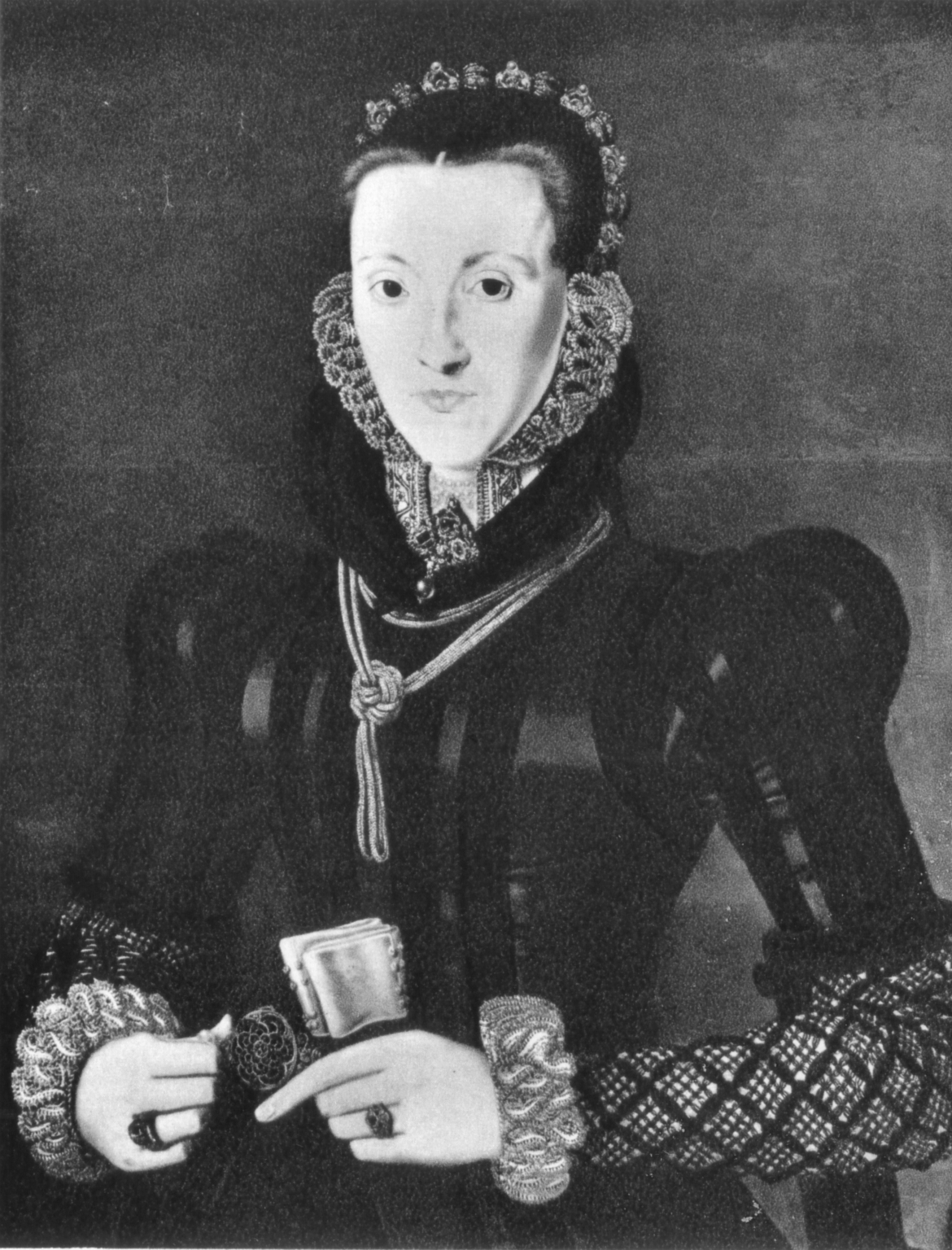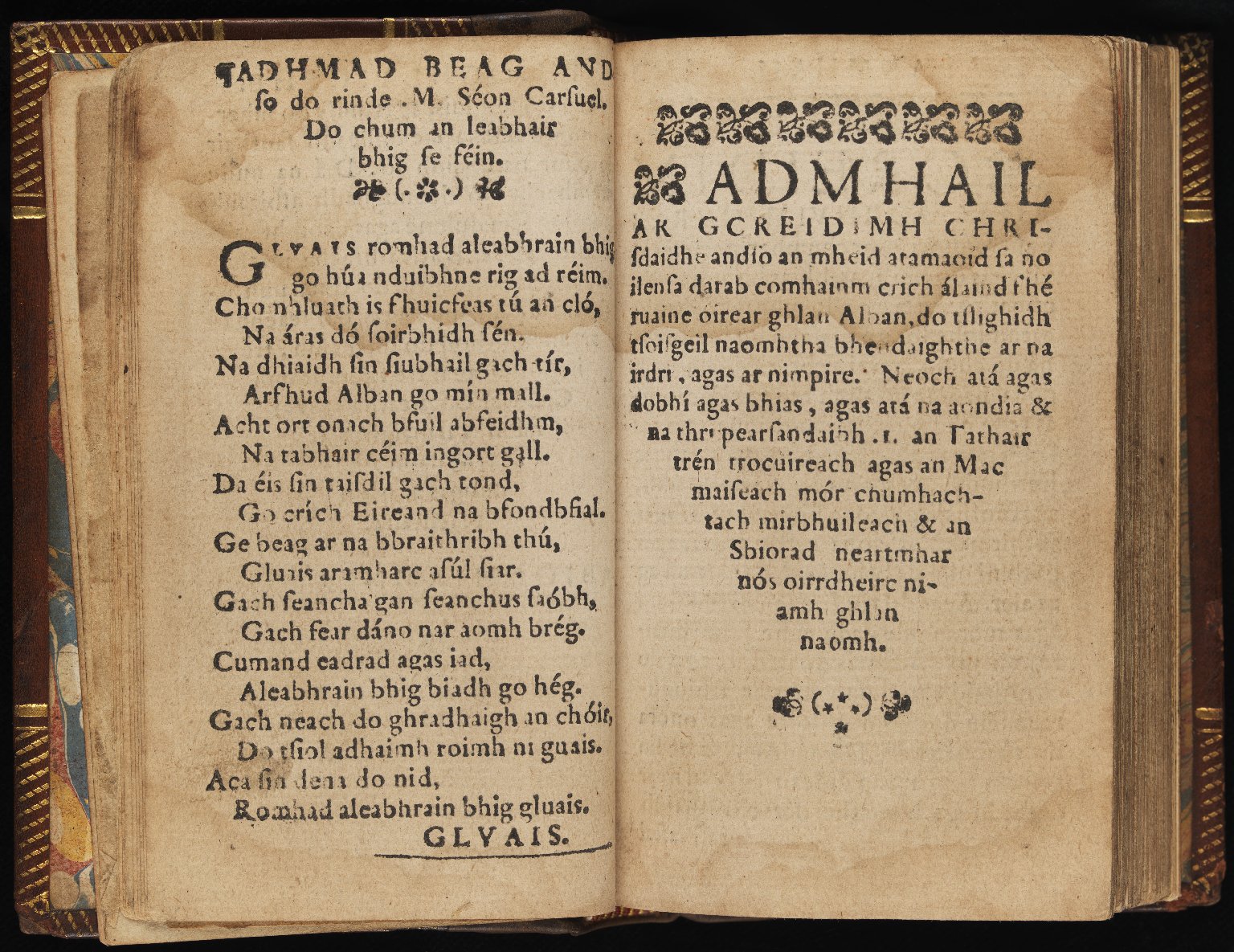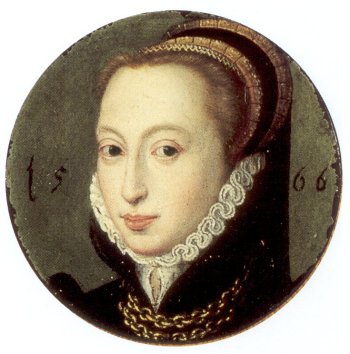|
Agnes Keith, Countess Of Moray
Agnes Keith, Countess of Moray (c. 1540 – 16 July 1588) was a Scottish noblewoman. She was the wife of James Stewart, 1st Earl of Moray, regent of Scotland and the illegitimate half-brother of Mary, Queen of Scots, making her a sister-in-law of the Scottish queen. As the wife of the regent, Agnes was the most powerful woman in Scotland from 1567 until her husband's assassination in 1570. She was married secondly to Sir Colin Campbell, heir presumptive to the earldom of Argyll. When he succeeded his brother as the 6th earl in 1573, Agnes was henceforth styled Countess of Argyll. During her second marriage, Agnes became embroiled in a litigation over Queen Mary's jewels which had earlier fallen into her keeping. It was her refusal to hand the jewels over to the Scottish Government that sparked a feud between the Earl of Argyll and the Regent Morton. Agnes was also known as "Annabel"G.E. Cokayne; with Vicary Gibbs, H.A. Doubleday, Geoffrey H. White, Duncan Warrand and Lord Howar ... [...More Info...] [...Related Items...] OR: [Wikipedia] [Google] [Baidu] |
James Stewart, 1st Earl Of Moray
James Stewart, 1st Earl of Moray (c. 1531 – 23 January 1570) was a member of the House of Stewart as the illegitimate son of King James V of Scotland. At times a supporter of his half-sister Mary, Queen of Scots, he was the regent of Scotland for his half-nephew, the infant King James VI, from 1567 until his assassination in 1570. He was the first head of government to be assassinated with a firearm. Early life Moray was born in about 1531, an illegitimate child of King James V of Scotland and his mistress Lady Margaret Erskine, daughter of John Erskine, 5th Lord Erskine, and wife of Sir Robert Douglas of Lochleven. On 31 August 1536, he received a royal charter granting the lands of Tantallon Castle, Tantallon and others. James was appointed Prior of St Andrews, Fife, in 1538.Sir James Balfour Paul, ''The Scots Peerage'', vol. 1 (Edinburgh: David Douglas, 1904), p. 23. This position supplied his income. Clothes for "lord James of Sanctandrois" and his brothers were made ... [...More Info...] [...Related Items...] OR: [Wikipedia] [Google] [Baidu] |
Joan Beaufort, Queen Of Scotland
Joan Beaufort ( 1404 – 15 July 1445) was Queen of Scots from 1424 to 1437 as the spouse of King James I. During part of the minority of her son James II (from 1437 to 1439), she served as the regent of Scotland, the first dowager Queen of Scotland to do so since the 13th century. Background and early life Joan Beaufort was a daughter of John Beaufort, 1st Earl of Somerset, a legitimised son of John of Gaunt by his mistress (and later third wife) Katherine Swynford. She was born in 1404. Joan's mother was Margaret Holland, the granddaughter of Joan of Kent (wife of Edward the Black Prince) from her earlier marriage to Thomas Holland, 1st Earl of Kent. Joan was also a half-niece of King Henry IV of England, first cousin once removed of Richard II, and great-granddaughter of Edward III. Her uncle, Henry Beaufort, was a cardinal and Chancellor of England. King James I of Scotland met Joan during his time as a prisoner in England, and knew her from at least 1420. She is sa ... [...More Info...] [...Related Items...] OR: [Wikipedia] [Google] [Baidu] |
Darnaway Castle
Darnaway Castle, also known as Tarnaway Castle, is located in Darnaway Forest, southwest of Forres in Moray, Scotland. This was Comyn land, given to Thomas Randolph along with the Earldom of Moray by King Robert I. The castle has remained the seat of the Earls of Moray ever since. Rebuilt in 1810, it retains the old banqueting hall, capable of accommodating 1,000 people. Etymology The name ''Darnaway'' represents an anglicisation of the Gaelic form ''Taranaich''. ''Taranaich'' conserves an early Brittonic form, ''Taranumagos'', derived from the elements ''taranu'' meaning "thunder" and ''magos'', "a plain" ( Welsh ''taran-maes''). Randolphs and Douglases Sir Thomas Randolph probably built the first castle. John, 3rd Earl, died at the Battle of Neville's Cross in 1346 without male heirs, and the earldom went to Patrick Dunbar, who was the husband of one of John's daughters. The male line of the Dunbars failed around 1430, and the earldom went to the Douglases. When A ... [...More Info...] [...Related Items...] OR: [Wikipedia] [Google] [Baidu] |
John Knox
John Knox ( – 24 November 1572) was a Scottish minister, Reformed theologian, and writer who was a leader of the country's Reformation. He was the founder of the Church of Scotland. Born in Giffordgate, a street in Haddington, East Lothian, Knox is believed to have been educated at the University of St Andrews and worked as a notary-priest. Influenced by early church reformers such as George Wishart, he joined the movement to reform the Scottish Church. He was caught up in the and political events that involved the murder of Cardinal David Beaton in 1546 and the intervention of the regent Mary of Guise. He was taken prisoner by French forces the following year and exiled to England on his release in 1549. While in exile, Knox was licensed to work in the Church of England, where he rose in the ranks to serve King Edward VI of England as a royal chaplain. He exerted a reforming influence on the text of the ''Book of Common Prayer''. In England, he met and married hi ... [...More Info...] [...Related Items...] OR: [Wikipedia] [Google] [Baidu] |
Holyrood, Edinburgh
Holyrood (; , ) is an area in Edinburgh, the capital of Scotland, lying east of the city centre, at the foot of the Royal Mile. The area takes its name from Holyrood Abbey, which was the Church of the Holy Rude (Scots for 'Holy Cross'). Holyrood includes the following sites: * The modern Scottish Parliament Building. For this reason "Holyrood" is often used in contemporary media as a metonym for the Scottish Government. * The Palace of Holyroodhouse, the official residence of the monarch A monarch () is a head of stateWebster's II New College Dictionary. "Monarch". Houghton Mifflin. Boston. 2001. p. 707. Life tenure, for life or until abdication, and therefore the head of state of a monarchy. A monarch may exercise the highest ... in Scotland. * The ruins of Holyrood Abbey * Holyrood Park, an expansive royal park to the south and east of the palace. * The Queen's Gallery, part of the Holyroodhouse complex formerly a church and now an art gallery. * Dynamic Earth ... [...More Info...] [...Related Items...] OR: [Wikipedia] [Google] [Baidu] |
James Stewart Earl Of Moray
James may refer to: People * James (given name) * James (surname) * James (musician), aka Faruq Mahfuz Anam James, (born 1964), Bollywood musician * James, brother of Jesus * King James (other), various kings named James * Prince James (other) * Saint James (other) Places Canada * James Bay, a large body of water * James, Ontario United Kingdom * James College, a college of the University of York United States * James, Georgia, an unincorporated community * James, Iowa, an unincorporated community * James City, North Carolina * James City County, Virginia ** James City (Virginia Company) ** James City Shire * James City, Pennsylvania * St. James City, Florida Film and television * ''James'' (2005 film), a Bollywood film * ''James'' (2008 film), an Irish short film * ''James'' (2022 film), an Indian Kannada-language film * "James", a television episode of ''Adventure Time'' Music * James (band), a band from Manchester ** ''James'', US title of ... [...More Info...] [...Related Items...] OR: [Wikipedia] [Google] [Baidu] |
James Hepburn, Earl Of Bothwell
James Hepburn, 1st Duke of Orkney and 4th Earl of Bothwell ( – 14 April 1578), better known simply as Lord Bothwell, was the third husband of Mary, Queen of Scots. He was accused of the murder of Mary's second husband, Henry Stuart, Lord Darnley, a charge of which he was acquitted. His marriage to Mary was controversial and divided the country; when he fled the growing rebellion to Norway, he was arrested and lived the rest of his life imprisoned in Denmark. Early life James Hepburn was the son of Patrick Hepburn, 3rd Earl of Bothwell, and Agnes Sinclair (d. 1572), daughter of Henry, Lord Sinclair, and was styled ''the Master of Bothwell'' from birth. He succeeded his father as Earl of Bothwell and Lord Hailes in 1556. Marriages As Lord High Admiral of Scotland, Lord Bothwell visited Copenhagen around 1559. He fell in love with Anna Tronds, known in English as Anna Throndsen or Anna Rustung. She was a Norwegian noblewoman whose father, Kristoffer Trondson, a famous Norweg ... [...More Info...] [...Related Items...] OR: [Wikipedia] [Google] [Baidu] |
Jean Gordon, Countess Of Bothwell
Jean Gordon, Countess of Bothwell (1546 – 14 May 1629) was a wealthy Scottish noblewoman and the second wife of James Hepburn, 4th Earl of Bothwell. He became, after his divorce from Lady Jean, the third husband of Mary, Queen of Scots. Lady Jean herself had a total of three husbands. Upon her second marriage, she became the Countess of Sutherland. Family Lady Jean Gordon was born at Huntly Castle, sometimes called Strathbogie, in Aberdeenshire, the second eldest daughter of George Gordon, 4th Earl of Huntly, the wealthiest and most powerful landowner in the Scottish Highlands, and Elizabeth Keith. Her paternal grandparents were Lord Gordon and Margaret Stewart, illegitimate daughter of King James IV by his mistress, Margaret Drummond. Her maternal grandparents were Robert Keith, Master of Marischal and Lady Elizabeth Douglas. Jean had nine brothers and two sisters, and the family were brought up at Huntly Castle, which was modernised during the 1550s. Her father's ... [...More Info...] [...Related Items...] OR: [Wikipedia] [Google] [Baidu] |
George Gordon, 4th Earl Of Huntly
George Gordon, 4th Earl of Huntly (151428 October 1562) was a Scottish nobleman. Life He was the son of John Gordon, Lord Gordon, and Margaret Stewart, daughter of James IV and Margaret Drummond. George Gordon inherited his earldom and estates in 1524 at age 10. As commander of the King's Army he defeated the English at the Battle of Haddon Rig in 1542, was a member of the council of Regency under James Hamilton, 2nd Earl of Arran and Cardinal Beaton and succeeded as Chancellor on the murder of Beaton in 1546. He was captured at the Battle of Pinkie Cleugh in 1547, and held in the Tower of London but in autumn 1548 he was released when a ransom was delivered by Robert Carnegie, Lord Kinnaird. In 1550, he accompanied queen Mary of Guise to France. He joined the Protestant Lords of the Congregation in 1560, although he was "a late, reluctant, and unreliable recruit". He was a religious conservative, however, and he worked for "a form of co-existence between Catholic and ... [...More Info...] [...Related Items...] OR: [Wikipedia] [Google] [Baidu] |
Elizabeth Keith, Countess Of Huntly
Elizabeth Keith, Countess of Huntly (fl. 1530-1566), was a Scottish noblewoman and the wife of George Gordon, 4th Earl of Huntly, Scotland's leading Catholic magnate during the reign of Mary, Queen of Scots. In 1562, Elizabeth encouraged her husband to raise forces against Queen Mary which led to his being outlawed, and after his death, his titles forfeited to the Crown. Elizabeth's son Sir John Gordon was executed for having taken part in his father's rebellion. She succeeded to the title of Countess of Huntly at her marriage on 27 March 1530, but like all Scottish married women in the sixteenth century would never have used her husband's surname. Her daughter, Lady Jean Gordon, Countess of Bothwell was the first wife of James Hepburn, 4th Earl of Bothwell, third husband of Mary, Queen of Scots. Family Elizabeth was born on an unknown day in 1513, 'reference needed''in Dunnottar Castle, Aberdeenshire, Scotland, the eldest daughter of Robert Keith, Master of Marischal and Lady ... [...More Info...] [...Related Items...] OR: [Wikipedia] [Google] [Baidu] |
Thomas Finlayson Henderson
__NOTOC__ Thomas Finlayson Henderson (25 May 1844 – 25 December 1923), often credited as T. F. Henderson, was a Scottish historian, author and editor. Henderson was a prolific author and contributed entries on Scottish figures for the ''Dictionary of National Biography'' and ''Encyclopædia Britannica''. He was considered an authority on poet Robert Burns and Mary, Queen of Scots. Biography Henderson was born in Lathones, Fife, Scotland in May 1844. He was the second of 11 children born to farmer Archibald Henderson and his wife, Catherine (''née'' Finlayson), both of Kincardine-in-Menteith, a village in Perthshire. He attended the University of St Andrews and joined the staff of the ''Encyclopædia Britannica''. In 1914, the University of St Andrews awarded him an honorary LL.D. He was an editor for several anthologies of poetry, including the works of Robert Burns. His work with Burns was praised by ''The Times'', which noted, "For the first time Burns was edited with ... [...More Info...] [...Related Items...] OR: [Wikipedia] [Google] [Baidu] |
Frendraught Castle
Frendraught CastleCoventry, Martin (1997) ''The Castles of Scotland''. Goblinshead. p. 184 or House is a 17th-century house, about east of Huntly, Aberdeenshire, Scotland, and west of Largue, on the site of a 13th-century castle. History King James V of Scotland visited Frendraught for a week in November 1535. The original castle was burnt down in October 1630 during a time of violent feuding between the Clan Crichton, Crichtons and the Clan Gordon, Gordons. Amongst those killed during the blaze were John Gordon of Milltown of Rothiemay, Rothiemay, John Gordon (Viscount of Melgum, Viscount Melgum / Viscount of Melgum, Lord Aboyne), English Will, Colonel Ivat and two unnamed servants. James Crichton of Frendraught and most of his people escaped. James Crichton was charged with, but acquitted of, their murder; instead, one of his servants, John Meldrum, was executed. This event was celebrated in the ballad, ‘'The Fire of Frendraught’’, ballad List of the Child Ballads, 1 ... [...More Info...] [...Related Items...] OR: [Wikipedia] [Google] [Baidu] |




